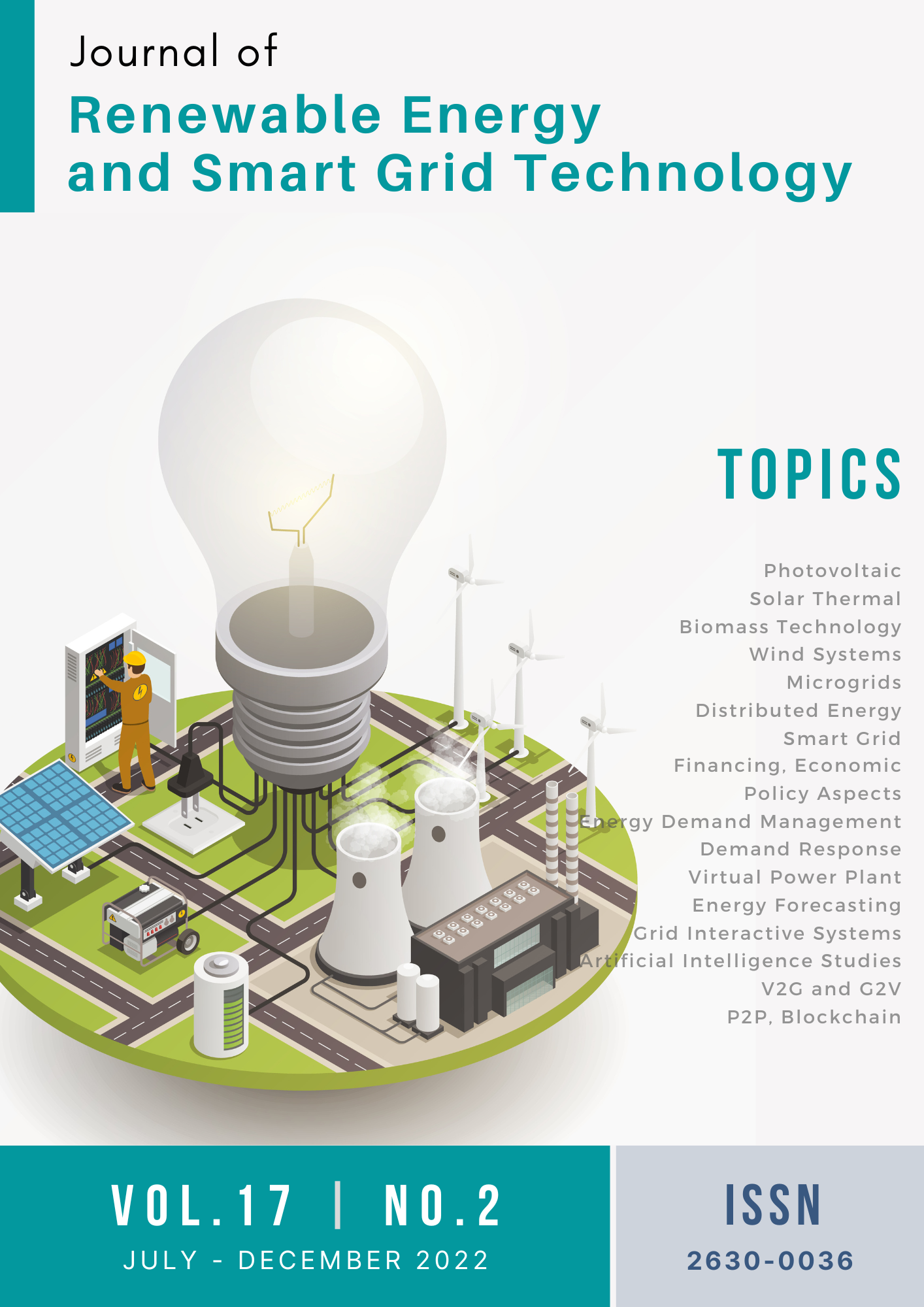Improvement of a Computer Tool for the Different Modes Optimization of Heat Transfer in a Monobloc House
Keywords:
Heat transfer, Saharan environment, Heating slab, Renewable energies, Thermal comfort, Solar energy, Radiometric stationAbstract
The main role of this work is to develop a computer calculation program to estimate the different modes of heat transfer for a habitable envelope equipped with a heating plate in order to optimize thermal comfort. This optimization is based on the use of real climate data from the region under consideration. To achieve this goal, we have developed five fundamental codes in FORTRAN language. The first code consists in modeling the flow of the heat transfer fluid in the heating slab pipe. The second is designed to model the heat transfer by conduction within the concrete slab. The third is developed for the modeling of thermal exchanges in a habitable envelope assimilated to a parallelepiped cavity based on the nodal method. The fourth code is reserved for the modeling of solar radiation by evaluating the wage flux density on different positions of the walls. The fifth and last code is dedicated to the evaluation of the perfect thermal coupling between the concrete slab and the heat transfer fluid pipes. The validation of the models implemented in the calculation codes was made on the basis of data measured recently for a clear sky of solar radiation at the radiometric station of the renewable energies research unit in the Saharan environment URER'MS of ADRAR. The results obtained showed a very good agreement between the calculated values using the computational codes developed and those measured by the radiometric station of the URER’MS during the typical day.
References
Yaïche, M. R. & Bekkouche, S.M.A. (2008). Conception et validation d’un programme sous Excel pour l’estimation du rayonnement solaire incident en Algérie. Cas d’un ciel totalement clair. Revue des Énergies Renouvelables, 11(3), 423–436.
Yettou, F., Malek, A., Haddadi, M., & Gama, A. (2009). Étude comparative de deux modèles de calcul du rayonnement solaire par ciel clair en Algérie. Revue des Énergies Renouvelables 12(2), 331–346.
Zarai, N., Chaabane, M., & Gabsi, S. (2010, November 5-7). Outil de planification de la production thermique des capteurs solaires. International Renewable Energy Congress, Sousse, Tunisia.
Raad, A. (2017). Co-simulation et optimisation multicritères en conception de bâtiment, par approche d’interopérabilité de services. Grenoble Alpes Métropole, France: Université Grenoble Alpes
Dinh, V. B., Delinchant, B., & Wurtz, F. (2016, June 7-9). Dimensionnement optimal des systèmes énergétiques intégrant la stratégie de gestion pour une maison raccordée au réseau. Symposium de Genie Electrique, Grenoble, France.
Oudrane, A., Aour, B., Hamouda, M. & Benhamou, M. (2016). Méthodologie pour la détermination de l’écartement optimal de la chaîne tubulaire d’une dalle chauffante. Revue des Énergies Renouvelables, 19(1), 11–19.
Hassine, N. B., Chesneau, X., & Laatar, A. H. (2017). Numerical simulation of heat and mass transfers during solar drying of sewage sludge: solar radiation effect. Energy Procedia, 139, 804–809.
Oudrane, A., & Aour, B. (2017). Numerical investigation of a laminar flow in a tubular chain of a heated floor slab. Recueil de mécanique, 2(2), 192–203.
Oudrane, A., Aour, B. & Hamouda, M. (2017). Numerical investigation of thermal exchanges for a habitable enclosure in a desert region. International Journal of Renewable Energy, 12(2), 87-105.
Heuzé, T., Leblond, J. B., & Bergheau, J. M. (2011). Modélisation des couplages fluide/solide dans les procédés d’assemblage à haute température. Mécanique et Industries, 12, 183–191.
Mladin, E., Lachi, M., & Padet, J. (2001). Transfert de chaleur couplé conduction-convection en régime instationnaire, induit par une température imposée sur une plaque d’épaisseur finie. Congrès Français de thermique, SFT2001, Nantes. 29-31.
Pellegrin, N. D. (2016). Modélisation fine des échanges thermiques entre les bâtiments et l’atmosphère urbaine. Marne, France: Université Paris-Est Créteil Val.
Mokhtari, F., Ait Messaoudéne, N., Hamid A., & Belhamel, M. (2006). Etude du comportement thermique d’une maison munie d’un système de chauffage solaire. Revue des Energies Renouvelables, 9(4), 363–370.
Lantri, F., Bachari, N.I., & Belbachir, H. (2017). Estimation et cartographie des différentes composantes de rayonnement solaire au sol à partir des données météorologiques. Revue des Energies Renouvelables. 20(1), 111-130.
Fiche Technique (Date de mise à jour : 22/06/2016) Tube PER Prégainé, 91, Rue Duruisseau, PA des Chesnes – 38297 St Quentin – Fallavier.
Oudrane, A., Aour, B., & Benhamou, M. (2016). Étude et analyse paramétrique d’une installation solaire: plancher solaire dicte d'implanter dans la région d’Adrar. El-Wahat pour les Recherches et les Études, 9(1). 27 – 49.
Moujalled, B. (2007). Modélisation dynamique du confort thermique dans les bâtiments naturellement ventilés. Villeurbanne, France: The Institut National des Sciences Appliquées de Lyon.
Réglementations (201). ‘’Thermique acoustique aération des bâtiments d’habitation neufs dans les DOM, Fiche d’application – Thermique - Protection contre les rayonnements solaires’’. Ministère de l'écologie du développement durable et de l’énergie.
Inard, C., Depecker, P., & Roux, J. -J. (1997). Un modèle simplifié pour la prédiction du champ de température dans les bâtiments. Rev. Gén. Therm, 36, 113-l 23.
Bouctouche, K. (2017). Modélisation multi spectrale des images satellitaire - Application : quantification du bilan d’énergie sol-atmosphère. Oran, Algérie : Laboratoire d’Analyse et d’Application des Rayonnements (LAAR).

Downloads
Published
How to Cite
Issue
Section
License
Copyright (c) 2022 School of Renewable Energy and Smart Grid Technology (SGtech)

This work is licensed under a Creative Commons Attribution-NonCommercial-NoDerivatives 4.0 International License.
All copyrights of the above manuscript, including rights to publish in any media, are transferred to the SGtech.
The authors retain the following rights;
1. All proprietary rights other than copyright.
2. Re-use of all or part of the above manuscript in their work.
3. Reproduction of the above manuscript for author’s personal use or for company/institution use provided that
(a) prior permission of SGtech is obtained,
(b) the source and SGtech copyright notice are indicated, and
(c) the copies are not offered for sale.








